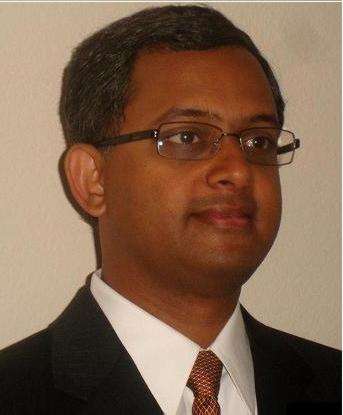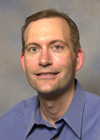|
Workshop Main Menu |
|
|
|
|
|
|
|
|
|
|
|
|
|
|
|
|
|
Organizing Committee |
|
|
General Chair:
Vojin G. Oklobdzija, UTD
Technical Program Co-Chairs:
Bogdan Staszewski, TI
Bhaskar Banerjee, UTD
Publicity Chair:
Dinesh Bhatia, UTD
Publications Chair:
Mak Kulkarni, TI
Local Arrangements Chair:
Rama Sangireddy, UTD
Registration Chair:
Arjun Rajagopal, TI
Treasurer:
Saqib Malik, TI
IEEE-DCAS Chair:
Sudhind Dhamankar, TI
|
 | |
|
Technical Program Committee |
|
|
Technical Program Co-Chairs:
Bogdan Staszewski, TI
Bhaskar Bannerjee, UTD
Committee:
Jacob Abraham, UT Austin
Poras Balsara, UT Dallas
Terry Blake, TI
Oren Eliezer, TI
Ranjit Gharpurey, UT Austin
Ping Gui, SMU
Mitch Thornton, SMU
Sebastian Hoyos, Texas A&M
Donald Lie, Texas Tech Univ.
Andrew Marshall, TI
Won Namgoong, UT Dallas
Laksman Tamil, UT Dallas
Tuna Tarim, TI
Liming Xiu, TI
|
 | |
| |

Keynote Address:
Abstract
Advances in integrated circuit technology have driven arguably the most successful technology revolution in history. After more than 30 years of scaling, the features in advanced chips are now so small that variations in the numbers of atoms and photons used in fabrication, result in significant variation in the electrical properties of these tiny transistors.
CMOS technology process improvements cannot be expected to reduce such variations in tiny artifacts. Instead, we must design systems that work in spite of such variations. Designers will increasingly rely on the efficient characterization and modeling of the resultant device behavior, current test methods will need to be extended to detect statistical outliers, and increasing amounts of redundancy will be introduced into designs to allow for the identification and replacement of parts with excessive variation. Most important of all, we must develop and employ design processes and design tools to produce variation resilient designs.
|
Invited Speakers:
-
 Dr. Jayant Kulkarni, Award Solutions. Dr. Jayant Kulkarni, Award Solutions.
"Towards 4G Wireless Systems"
Abstract
Telecom is a significant end-market for semiconductor devices. Within telecom, the wireless handset market accounts for the vast majority of the demand for semiconductors. The nature of demand is driven by technology decisions that wireless operators make. The current generation of technology deployed by wireless operators is referred to as the 3rd Generation of wireless (3G). 3G supports voice as well as data, but on distinct networks. It provides users high data speeds, but cannot guarantee quality of service necessary to support real-time applications. Shrinking voice revenues, heavy cost pressures, the desire to use spectrum most efficiently, and the evolving competitive scenario are some of the factors pushing wireless operators to 4G networks. LTE and Wimax are the two dominant technologies being considered for 4G. Both are characterized by high spectral efficiency thanks to the use of OFDM and Multiple Antenna techniques. 4G will be able to support high throughput and the Quality of Service required for deploying real-time multi-media applications. This will drive a new wave of demand for semiconductors for 4G user devices. Demand for semiconductors will likely come from three different areas, each with distinct needs: smartphones in developed economies, low-cost phones in developing economies, and a new wave of devices that enable machine-to-machine applications.
Biography
Jayant Kulkarni is the Vice-President for Corporate Development at Award Solutions. In this capacity, he is responsible for Finance, Partnerships & Legal Affairs at Award. He also offers technical training and consulting services in 4G wireless technologies such as LTE and Wimax.
Prior to Award Solutions, Jayant was the Director of Business Development at Trilogy, an enterprise software company, where he was instrumental in defining Trilogy's Price Optimization solution suite and in leading management consulting engagements with clients.
Before Trilogy, Jayant was a consultant with McKinsey & Company, a global management consulting firm. Here he served senior executives of Fortune 500 companies in the telecom and IT space. His engagements spanned many functional areas such as mergers/acquisitions, investment analysis, marketing strategy development, new business development, and operational effectiveness.
Jayant began his career in research and development in the areas of wireless systems and broadband networks for Nortel and Samsung Telecom. At Samsung, he defined interface requirements for their next generation switch. At Nortel, he provided technical leadership and managed R&D groups that developed and conducted technology trials in enhanced services, low-power wireless systems and voice over ATM applications. He holds a patent in wireless systems and has authored a number of technical publications.
Jayant holds a B.Tech in Electrical Engineering from the Indian Institute of Technology, Mumbai, a Ph.D. in Computer Engineering from the University of S. Carolina, and a M.B.A. in Finance, Marketing and Entrepreneurship from the Wharton School of Business of the University of Pennsylvania.
-
 Prof. Larry Larson, University of California, San Diego. Prof. Larry Larson, University of California, San Diego.
"Advanced Digital Linearization Approaches for Wireless RF Power Amplifiers"
Biography
The RFIC group at the University of California at San Diego group is led by Dr. Lawrence E. Larson. Lawrence E. Larson received the BS degree in Electrical Engineering in 1979, and the M. Eng. degree in 1980, both from Cornell University, Ithaca, NY., He received the PhD degree in Electrical Engineering from the University of California -Los Angeles in 1986.
Dr. Larson has been involved in the development of ultrahigh frequency compound semiconductor transistor and integrated circuit technology. During the late 1980's he was a key member and leader of the team at Hughes Research Laboratories that developed the first high-reliability InP-based HEMT technology for spaceborne 60 GHz low-noise amplifier applications. These millimeter-wave amplifiers provided a dramatic improvement over prior generations of mmW low-noise amplifiers, dropping receiver noise figure from 12 dB to less than 2.5dB. In addition, Dr. Larson led the research group that extended InP-based HEMT technology into the integrated circuit area. His group was the first to demonstrate a high-performance InP-based MMIC technology, and his research led to a number of "firsts", including the first 44 GHz InP-based HEMT MMIC power amplifiers, with greater than 40% power-added efficiency, a 2 GHz low-noise MMIC amplifier with a noise figure of under 0.5 dB, and the world's fastest room temperature millimeter-wave integrated circuit - a VCO operating in the fundamental mode in excess of 210 GHz.
Dr. Larson led the research effort in the early 1990's that developed the first microwave and mmW applications of microelectronic-mechanical (MEMS) technologies, including the first MEMS switches for microwave applications. Dr. Larson holds many of the fundamental patents in this field. He also led the technical effort with a Hughes/IBM alliance for developing commercial applications of Si/SiGe HBT technology. His group was the first to use this technology to demonstrate high performance, microwave/millimeter wave (10 to 25 GHz) ICs in silicon-based technology in the early 1990's.
He joined the faculty at the University of California -San Diego, in 1996, where he is the inaugural holder of the Communications Industry Chair. He is currently Director of the UCSD Center for Wireless Communications. He was co-recipient of the 1996 Lawrence A. Hyland Patent Award of Hughes Electronics, for his work on low-noise millimeterwave HEMTs, the 1995 HRL sector Patent award for his work on RF MEMS technology, and the 1999 IBM Microelectronics Excellence Award for his work in Si/SiGe HBT technology. He has published over 150 papers, co-authored three books, has received 25 US patents, and is a Fellow of the IEEE.
At UCSD, he is the Director of the Center for Wireless Communications, where he is the inaugural holder of the Communications Industry Chair. Dr. Larson's research interests are in the area of microwave and millimeterwave devices and circuits, data conversion, and communications systems.
-
 Mr. Kent Novak, Texas Instruments. Mr. Kent Novak, Texas Instruments.
"Enabling Breakthroughs in Medical Electronics"
Biography
As Vice President and General Manager of TI's Medical / HiRel business unit, Kent Novak directs the definition, development and delivery of leading-edge devices for the market segments including medical devices; military and defense; space and aerospace; test and measurement; and other high reliability applications. Kent joined TI in 2003 to lead the Wireless Infrastructure Business Unit before being promoted to lead the High Speed Communications Group in 2004. He was promoted to Vice President and General Manager of the Medical / HiRel organization when it was formed in the beginning of 2007.
After earning undergraduate and graduate degrees in Industrial Engineering from Purdue University, Kent began his career as a digital switching systems engineer with AT&T Bell Laboratories in 1988. His 15 years in the telecom industry were spent with industry leaders such as Bell Labs, AT&T-Network Systems (Lucent), DSC Communications, Alcatel and Corvis Communications in customer oriented functions including product management, marketing and sales support. Kent has extensive international experience serving in expatriate assignments in London, Copenhagen and Amsterdam.
A native of San Antonio, Kent returned to Texas in 1994. He and his wife, Heather, have two sons and enjoy outdoor activities including sports and camping.
-
 Prof. Ken O, University of Florida. Prof. Ken O, University of Florida.
"Progress toward a single chip radio in CMOS"
Abstract
Small communication nodes, called µNodes, have been inspired by the great improvement in the high frequency capabilities of CMOS. Functionally, a µNode system on a chip (SoC) will contain a microprocessor, a true single chip radio including a baseband signal processor and antennas, and eventually various sensors. Physically, it consists of one low cost CMOS chip mounted on a battery or other power source. A typical size of µNodes is expected to be that of an m&m. Depending on applications and configuration, a µNode could be as small as ~ 3mm x 3mm x 9 mm, which makes it difficult to visually detect. Presently, a prototype operating at 24 GHz is being developed using 130-nm CMOS technology. The intended ranges are 1-5 m for node to node communication, and ~ 100 m for node to a base station communication. This presentation will describe the challenges and research progress toward the realization of the true single chip radio. In particular, the performance of on-chip antennas, a technique to eliminate the crystal frequency reference, 24-GHz RF CMOS circuits, and isolation issue between the transmitted signal from an on-chip antenna and other RF circuits will be discussed.
Biography
Kenneth O received his S.B, S.M, and Ph.D degrees in Electrical Engineering and Computer Science from the Massachusetts Institute of Technology, Cambridge, MA in 1984, 1984, and 1989, respectively. From 1989 to 1994, Dr. O worked at Analog Devices Inc. developing sub-micron CMOS processes for mixed signal applications and high speed bipolar and BiCMOS processes for RF and mixed signal applications. He is currently a professor at the University of Florida, Gainesville. His research group is developing circuits and components required to implement analog and digital systems operating between 1 and THz using silicon IC technologies. He was the general chair of the 2001 IEEE Bipolar/BiCMOS Circuits and Technology Meeting . Dr. O has also served as the publication chairman of the 1999 International Electron Device Meeting and as an associate editor for IEEE Transaction on Electron Devices from 1999 to 2001.
Since 2001, he has also been a member of International Advisory Committee for Journal of Semiconductor Technology and Science. He has authored and co-authored ~170 journal and conference publications, as well as holding nine patents. 1996 NSF Early Career Development Award and 2004 UF Ph.D. Advisor Award. He also held a UF Research Foundation Professorship from 2004-2007.
|
Click here to download the complete workshop PROGRAM
|
|


